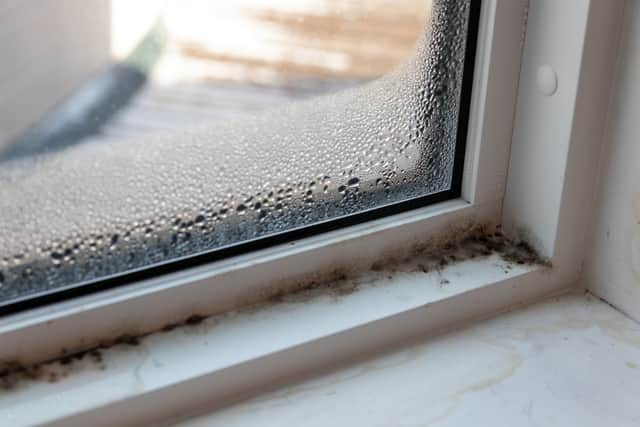How to stop mould in your home this winter - expert’s top tips for reducing risk of damp in cold temperatures


Winter has arrived in the UK and with darker days and colder temperatures, one major concern for households across the country is the risk of mould and dampness in the home.
The matter is on the minds of thousands of people after the tragic death of two-year-old Awaab Ishak in Rochdale due to extreme mould in his Boroughwide Housing home.
Advertisement
Hide AdAdvertisement
Hide AdThe young boy was found to have died from a respiratory condition he developed due to the mould. The housing association which failed to treat the mould has now been stripped of £1million of government funding. Mould and damp can become particularly prevalent during the winter months as temperatures quickly drop.
With the cost of living crisis and households potentially limiting their use of budget-guzzling measures such as central heating, the issue of keeping dampness and mould at bay can become a tricky situation to deal with.
Most would be tempted to turn on the central heating to get rid of these issues. However, could there be another way to combat it?NationalWorld speaks to Dr Simon Clarke, Associate Professor in Cellular Microbiology at the University of Reading, about how mould and dampness develops indoors and what can be done to stop this without affecting your bills.
What is mould and how does it grow?
Mould is a fungus which can appear as a dark coloured, dust-like substance on affected walls. This dust-like texture means that spores can easily spread throughout the wall and even into the air.
Advertisement
Hide AdAdvertisement
Hide AdDr Clarke says: “Mould likes moisture. When you get a mould infection in the plaster of a wall, it can grow from there and expand. It will go through a very complicated life cycle which can lead to it releasing spores and breaking off, getting into the air and, of course, this leads to people breathing it in.”
Condensation on windows and indoor walls can therefore lead to the development and growth of mould and dampness in the home. And contrary to common belief, the actual temperature of the room may not have a direct effect on the way mould spreads or the amount of moisture in the room.


He said: “It’s entirely possible to have a warm house that’s also damp. People rack up the heating in a house, particularly when a building is new and the plaster isn’t fully dry. So, rising humidity means that the mould will be more likely to grow.”
The main issue with this is the health issues it can cause if mould is allowed to grow and spores are released into the air. Dr Clarke added: “ When you breathe it in, your immune system reacts and it can cause problems.
Advertisement
Hide AdAdvertisement
Hide Ad“In worst case scenarios, if somebody doesn’t have a properly functioning immune system, you might get a fungal infection of the respiratory tract. But that’s probably quite rare.”
What is the best way to stop mould growing indoors?
The cost of living crisis will inevitably have led to the purchase of many heating devices indoors designed to take the stress off of bills. This includes things like draught excluders to keep properties warmer.
However, Dr Clarke warns that the use of these items may actually help mould to develop. He adds that a warm house doesn’t necessarily mean that you have a dry home, even in new build homes with newly-laid plaster.
Dr Clarke adds: “I hear more and more stories about it, as people’s houses get less draughty. This is due to things like central heating and double glazed windows which are designed to keep cold air out - things like that mean that the humidity level in houses is more likely to increase.”
Advertisement
Hide AdAdvertisement
Hide AdAnother tip from Dr Clarke is to have “less damp things in the house”, including wet laundry. He said: “Drying wet laundry in the house can be a problem. If a house is new or has been recently replastered, that might be a problem as well. These things, even when they appear superficially dry, they’re not fully so.”
Of course, the option to dry laundry in any other space is not an option for not only those in properties such as flats, but also during the winter months when laundry won’t dry as quickly as it would normally in the warm sun. The main key to this is making sure that laundry dried indoors is done so in a well-ventilated area which will allow for the excess moisture to escape the room.
Ventilation is key to combating damp and mould indoors and while it may make the room colder, opening windows and keeping a good airflow throughout your home will help to reduce moisture build up. Dehumidifiers, both electric or non-electric, can be used to help absorb excess moisture, with Dr Clarke adding: “Of course you would need to empty it outside or pour the water down the sink but you do need to get rid of the moisture from your house for it to be effective.”
Comment Guidelines
National World encourages reader discussion on our stories. User feedback, insights and back-and-forth exchanges add a rich layer of context to reporting. Please review our Community Guidelines before commenting.
